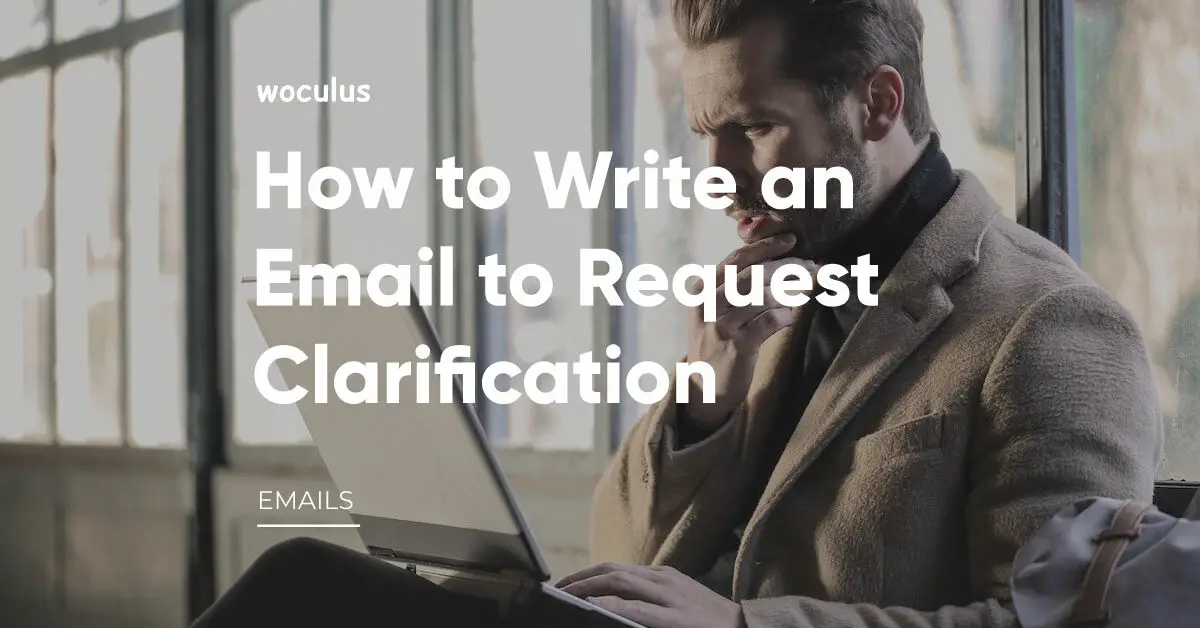A clarification email is a concise response to request a further explanation regarding a received message. It serves as a means to seek clarification and gain a clearer understanding of the sender’s intended meaning or information conveyed in their initial communication.
While email is the defacto mode of communication for professionals, it has flaws. And one of them is how easily it can be misunderstood or confused. While the sender may think they’ve expressed themselves effectively, chances are you may not understand them. When this happens, the only thing you can do it to send an email asking them to clarify their information.
Client’s requirements can vary from minor preferences in color, delivery, or packaging to more detailed modifications. Emails are an excellent medium to document client requirements for review and confirmation. Organizations often charge add-on costs for special requirements and modifications to products or services, therefore, errors in capturing the client’s requirements are potentially costly for your organization and damaging to customer satisfaction and retention.
How you write an email to clarify a client’s requirement will ultimately be guided by your organizational culture, branding, and writing style. Elements such as the email layout, color scheme, font, and tone should be deliberate in communicating a consistent brand image. Big brands such as Western Union, Heineken, and Google – are very good at maintaining a consistent brand image in their communications by using uniform fonts, colors, and email templates.
How to Write an Email to Request Clarification
Here’s everything you need to know when writing an email to ask for clarification.
Appreciate the Recipient
Your email should begin with you appreciating the recipient for their previous correspondence. While you may not understand what they want yet, it is standard practice to start your email with appreciation.
State the Request
Clearly state the section you want clarification on. If this is the entirety of the message, also include this in your email as well. If not, mention the specific section in your email that you must respond to. The clearer you can express your confusion, the easier it will be for the recipient to understand how to provide clarification.
To do this, ask straight questions using unambiguous and direct messaging.
Offer Assistance
To do this, state that you’re open to offering assistance if they require it. An example is, “If there’s any way I can help you, please do not hesitate to let me know.”
Polite Closing
Close your email by thanking your recipient for their time and consideration.
Tips on How to Write Clarification Email to Clients
Keeping your unique organizational culture and brand in mind, here are some tips to help you write emails to clarify clients’ requirements:
Restate the Client Requirement in the Email for Clarification
An email to clarify a client’s requirement must be properly written and maintain email writing best practices. Begin the email with a salutation and introduction that clearly captures the purpose of your email. Summarize the client’s requirements in a few lines in your introduction to show a clear understanding of the client’s needs.
Make your introduction polite and warm. Recount important elements of the client requirement such as the channel used to submit the requirement, time, and other descriptive information. To help you write strong email introductions, remember that your aim is to “Tell the receiver, what you want to tell them”.
Provide All Relevant Information in the Email to Clarify the Client’s Requirement
While the introduction provides a summary, the body of your email should be detailed. No one wants to receive information piecemeal, especially when there are cost implications. It is much better to provide enough information than leave important details out.
The body of your email should provide the client with details on:
- Your company policy or process for fulfilling the requirement
- Timeline for delivering on the requirements
- Cost implications of the requirement
- Additional information or details required from the client
The client should have a clear picture of how you will handle the requirement after reading the body of your email. Use clear and simple language in your email and avoid jargon to ensure your email will be easily understood.
Very complex client requirements may require several days of review and consultation before a solution can be offered to the client. In such cases, simply restate the requirements, ask for the client’s confirmation, and inform the client that you will revert with feedback.
Ask for Confirmation of the Requirement
If you have successfully captured the client’s requirements and painted a clear picture of the implications of the client’s requirements, ask the client to confirm and accept your terms in the concluding section of your email. Ensure the terms communicated to the client are in line with your company policy. Consult relevant units to confirm all costs and implications before informing the client.
Communication is only effective when the message is understood as intended by the sender of the message, so requires the client’s confirmation. Some clients may not fully understand the implications of their requirements or may rethink their preferences when they see it in print. The concluding section of an email to clarify a client’s requirement should ask the client to confirm that the requirement has been properly understood by the organization and that the terms provided for the fulfillment of the requirement are acceptable to the client.
Sample Email To Clarify A Client’s Requirement
This is an example of a clarification email sample.
Subject: Clarification Request: Client's Requirement Dear [Client's Name], I hope this email finds you well. I am writing to seek clarification on the requirements you provided for [project/task]. To ensure we fully understand your needs and deliver the desired outcome, we kindly request your assistance in clarifying a few points. Could you please provide more details on [specific aspect of the requirement]? Understanding [specific information] will help us tailor our approach accordingly. Additionally, if you could elaborate on [specific aspect of the requirement] and provide any examples or samples related to [specific aspect of the requirement], it would give us a clearer understanding of your expectations. We apologize for any inconvenience caused by these clarification requests, but we believe a comprehensive understanding is crucial for a successful project. Your input and insights will greatly contribute to our ability to meet and exceed your expectations. Thank you for your time and cooperation. We look forward to your prompt response. Best regards, [Your Name] [Your Position/Role] [Your Company Name] [Contact Information]
Sample Email to Clarify Information
Dear [Recipient], I hope this email finds you well. I am writing to seek clarification on the information provided regarding [specific topic]. I wanted to ensure that I have understood the details correctly before proceeding. Could you please confirm [specific point or detail] so that I can accurately incorporate it into my work/decision-making process? Additionally, if there are any additional documents or resources related to this matter, please let me know. Thank you for your attention to this matter, and I look forward to your prompt response. Best regards, [Your Name]
Sample Email to Clarify a Misunderstanding
Dear [Recipient], I hope this email finds you well. I am writing to address a misunderstanding that has occurred regarding [specific topic]. It seems there might have been a miscommunication or confusion, and I would appreciate your assistance in clarifying the matter. To ensure we are on the same page, could you please provide further clarification on [specific point or detail]? It would greatly help me in understanding the situation accurately and resolving any potential issues. Thank you for your prompt attention to this matter, and I look forward to your response. Best regards, [Your Name]
How to Politely Ask for Clarification in Email
Dear [Recipient], I hope this email finds you well. I am writing to kindly request some clarification on the recent information provided regarding [specific topic]. I want to ensure that I have a clear understanding before proceeding further. If possible, could you please elaborate on [specific point or detail]? This would greatly assist me in accurately comprehending the situation and taking appropriate action. Thank you for your understanding and prompt attention to this matter. I greatly appreciate your assistance. Warm regards, [Your Name]
Clarification Email Subject Lines
1. Request for Clarification on [Specific Topic] 2. Seeking Further Details: Need Clarification 3. Clarification Needed: [Specific Poi Issue] 4. Clearing up Misunderstanding: Seeking Clarification 5. Urgent: Need Clarification on [Matter] 6. Requesting Clarification for Accurate Understanding 7. Seeking Clarity: Please Clarify [Specific Information] 8. Clarification Required: [Specific Topic ] 9. Needing Clear Explanation: Request for Clarification 10. Seeking Clearer Insight: Clarification Requested
Clarification Email to Boss Sample
Subject: Request for Clarification Dear [Boss's Name], I hope this email finds you well. I am reaching out to seek clarification regarding the project guidelines we discussed during our last meeting. To ensure that I am proceeding in the right direction, I would greatly appreciate some further clarification on a few points. Specifically, could you please provide more details regarding [specific aspect or requirement]? Additionally, if there are any specific deadlines or deliverables that need to be prioritized, please let me know. Thank you for your guidance and support. Your clarification will greatly assist me in ensuring the successful execution of the project. Best regards, [Your Name]
Conclusion
Combine good email writing practice with your organizational culture and style to consistently write quality emails to clients. An email to clarify a client’s requirements should simply build on the fundamentals for writing a good email while ensuring that the necessary information required from your organization is provided and the client’s obligations are clearly captured. This will ensure effective communication and continued customer satisfaction and retention.







